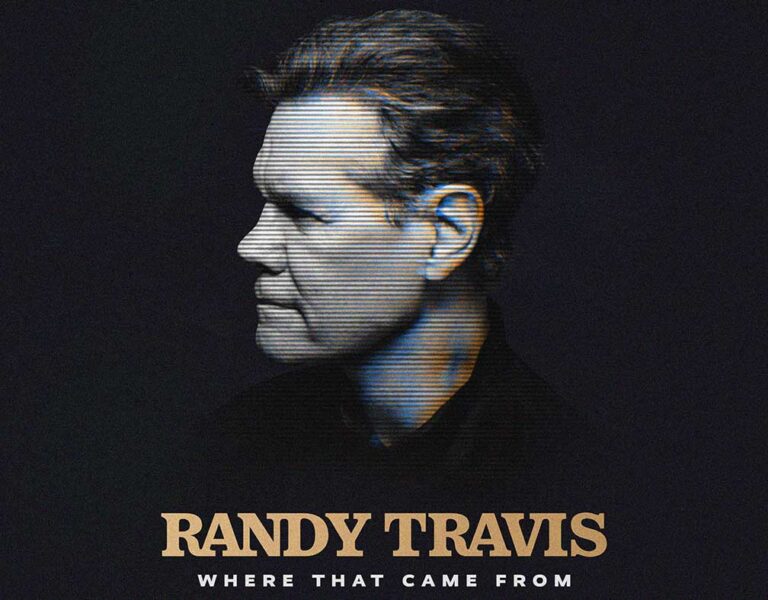If you followed the neo-traditionalist movement in 1980s and 1990s country music, no doubt you remember Randy Travis’ debut single, “1982.” The song hit the top of the charts for Travis in 1985, describing a mistake Travis wanted to go back and correct. “Operator, please connect me to 1982; I need to make apologies for what I didn’t do,” became a theme of Randy Travis songs for over three decades.
But going back in time seemed impossible in 2013 when Travis suffered a debilitating stroke following a heart procedure. Given only a small chance of survival, Travis beat the odds — and he hasn’t been forgotten.
The stroke left Randy Travis virtually speechless. Over the years, he has made occasional appearances on stage, notably leading the audience in a broken rendition of “Amazing Grace” at his induction into the Country Music Hall of Fame. And he put the exclamation point on his signature song “Forever and Ever, Amen,” in a live performance where various artists who have been influenced by Travis paid tribute to his music.
While Travis has surprised us before, perhaps he saved his biggest surprise for what is happening with his music right now, 11 years after he physically lost his ability to sing. In May, Travis released what — to all but the keen listener’s ear — sounds like an original recording, “There ain’t no more where that came from.”
The story behind the song makes us believe we can “lose our mind” and “go back in time” to when we were all a little younger and Travis was changing the course of country music history.
It’s a story stirring debate in the music world.
“There ain’t no more where that came from” is undoubtedly a Randy Travis song, but without the contribution of artificial intelligence, it would never have come to life.
In a recent news story on “CBS Sunday Morning,” the details of the new song were revealed. Travis’ long-time producers teamed up with AI experts to recreate his voice in an all-new format.
To oversimplify a complicated process, James Dupre, a performer with voice characteristics similar to Travis’, first recorded the song. Stripping away the background effects, AI professionals created a digital footprint of Dupre’s voice as it moved through the lyrics.
In the meantime, AI techs combed through Travis’ vast body of work, catching each change in pitch, syllable and measure, breaking it up by the millisecond to create a second track using Travis’ voice. This track was overlaid on the digital footprint Dupre had made — and with added background music, “There ain’t no more where that came from” came to life.
Randy Travis fans — and fans of country music in general — have warmed to the computer-generated return of Travis’ style. Comments posted to YouTube include, “Randy Travis brought back real county in the ’80s. Now he’s doing it again.” And, “Welcome back, Randy. So good to hear your voice.” Or, “Thank you, Jesus, for Randy Travis. Welcome back!”
But on the other hand (no pun intended), musical purists are greeting Travis’ AI effort with skepticism or even outright criticism.
As for Dupre, he says he’s thrilled that his music has taken on new meaning, but he also understands the skepticism from those who say AI-created entertainment is a dangerous path. Dupre told Rolling Stone, “… honestly, I’m still on the fence about AI use. But in this particular case, if Randy was still able to sing, he would be singing. Taking away his ability to use the technology, it just doesn’t make any sense to do that if it’s there. (Randy) gives it his blessing.”
Dupre’s point about Travis’ blessing is important.
Despite his stroke, Travis is still capable of making decisions, and he often writes what he cannot speak. It’s not like a team is taking advantage of Travis’ estate and putting digital recordings of his work together for their own gain.
Another critic wrote harshly of the experiment, noting it should have a warning on the label — just like food products that contain preservatives. His point is not lost because “There ain’t no more where that came from” is strictly made from preservatives. It is far from organic. But so far, listeners seem to know this and accept it.
Of late, the news has been filled with stories touting the good things AI will bring as well as the bad for which it could be used. Will AI eventually become more intelligent than its creators and bring all sorts of “end-of-the-world” scenarios sci-fi and George Orwell have envisioned for the past 75 years? (Like Travis, Orwell must have appreciated “1982” when his prophecies still had a chance of coming true).
Or will the audio version of AI be combined with video technology and bring back the likes of John Wayne and Clark Gable to the big screen. And, if it does, will there even be a need for human performing artists anymore? After all, working with artists can be difficult — far less difficult than manipulating a computer program.
The jury is out on what Randy Travis new song means for the music industry. But it’s been discussed that the song may be one of several the producers have in the works. We may soon be listening to an entire album of Randy Travis AI-generated songs. If that’s the case, it does prove one thing wrong with the newly released tune. There is actually a whole lot more where that came from.
Until next time, take a trip back to 1982 and follow Randy Travis’ career right up to 2013 (and even beyond, up to today). It won’t be in real time, but these days, is anything?
Since retiring from a career as an outdoor recreation professional from the State of Arkansas, Kris Rutherford has worked as a freelance writer and, with his wife, owns and publishes a small Northeast Texas newspaper, The Roxton Progress. Kris has worked as a ghostwriter and editor and has authored seven books of his own. He became interested in the trucking industry as a child in the 1970s when his family traveled the interstates twice a year between their home in Maine and their native Texas. He has been a classic country music enthusiast since the age of nine when he developed a special interest in trucking songs.








